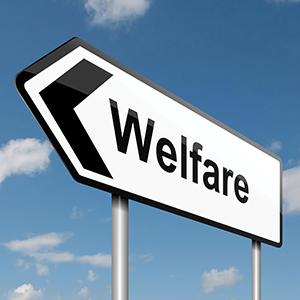Fantasy budgets and welfare dreams
Victor Hewitt explains the finances of welfare and the consequences for public expenditure in Northern Ireland.
Students of our public finances (there’s another one out there somewhere) are experiencing a sort of reverse déjà vu. Let me explain. Back in the 1920s the government of the newly created Northern Ireland had almost total fiscal autonomy after paying an ‘Imperial Contribution’ towards the cost of national defence and other central services. The catch was that the local economy was so poor and the tax base so weak that health and welfare payments couldn’t be afforded on the same scale as in Great Britain.
So for the next 50 years every administration worked tirelessly, but secretly, to get rid of the fiscal autonomy and get the money from the Treasury to finance a proper budget and public services on a par with elsewhere in the United Kingdom. Fast forward to today and not a great deal has changed with the economy which is still far too weak to support decent services and a modern welfare system. However, now some political parties in the current Executive are arguing for a new form of fiscal autonomy which amounts to the Executive deciding what they want to spend, including welfare and benefits at super-parity rates, with the Treasury handing over the money without too much fuss.
Strangely, the Treasury were not too thrilled with this idea which led, through a bit of a political crisis, to the Stormont House Agreement (SHA) of December 2014. This gave the Executive some additional money and freedoms in turn for adopting the welfare changes operating in the rest of the UK. However, the wheels came off this deal in March 2015 just in the middle of the budget process, leaving the Executive in financial disarray.
So enter the fantasy budget for 2015, the idea being to create a budget pretending that the financial arrangements of the SHA apply in order to allow departments legally to keep spending on public services while the financial and political impasse is sorted out. Tables 1 and 2 set out the full budget for 2015 and the financial elements of the SHA for 2015 and subsequent years. The budget table does not adopt the official form which is hard to follow but rather sets out spending under the control of the Executive on the one hand and where the money comes from to finance that spending on the other hand.
As noted, this is only spending within the departmental expenditure limit (the DEL), there is a further £9.2 billion not directly controlled by the Executive which flows through annually managed expenditure (AME). Just to give some perspective, this total of £22 billion spending for 1.7 million people is nearly half as much as the UK spends on defence for 65 million people. If Northern Ireland had to rely on its own tax revenues its public spending would most probably be less than £10 billion each year for everything, welfare included.
It is immediately apparent that without the SHA money the overall budget would be around £600 million short in 2015 and on average around half that each year for the rest of this Parliament. Of course, ignoring this reality is not an option and very shortly departmental spending will have to be reigned back sharply in the monitoring rounds to avoid breaching the Executive’s spending limits. Failure to do so would force the Treasury to take control of the budget and most probably end the Executive. At best, therefore, the ‘fantasy budget’ gains a few months at the cost of considerable financial disruption.
Even if the present difficulties are resolved and the budget in Table 1 becomes a real budget, there are some interesting and perhaps worrying features in its details. The most important of these is the rise of borrowing as a means of financing the Executive’s spending. Prior to devolution, government in Northern Ireland was effectively debt free. Now the Executive is edging closer to the
£3 billion debt ceiling which it operates under. Central to this is the Re-Investment and Reform Initiative (RRI) borrowing which is nominally £200 million per year, but has been stretched to over £300 million in 2015. Borrowing, of course, has to be paid back and each £100 million of borrowing costs around £4 million in repayments each year.
However, commitments do not end there. The many Public Private Partnerships and Private Finance deals entered into over the past 20 years locks the Executive into substantial unitary payments each year to the private sector both to cover the costs of private borrowing and the provision of services (although the capital element is now counted as public capital). It is interesting that over £400 million of the SHA spending will be financed by additional borrowing.
Since the ‘fantasy budget’ was adopted two further financial developments have impacted on the Executive. The first is the £38 million of in-year cuts in 2015 which is our share of the Chancellor’s emergency budget in May and, of course, the consequences of the main UK budget in July. The latter was mostly concerned with tax issues which are out-with the Executive’s control but the further welfare cuts, and particularly a reduced welfare cap and restrictions on child benefit, will widen the political divisions already apparent in the Executive.
There is also the issue of student maintenance grants which count as public expenditure in both Great Britain (GB) and Northern Ireland at present but which will become loans in GB in future.
Since loans are mostly not counted as public expenditure they will fall outside the Barnett formula in future leaving the Executive with the unhappy choice of moving to loans here or continuing to pay grants for which they will receive no money from the Treasury.
These are certainly interesting times in the public finances but returning to the lessons of history, devolved administrations cannot long depart from the practices of their much larger paymaster without severe consequences.







